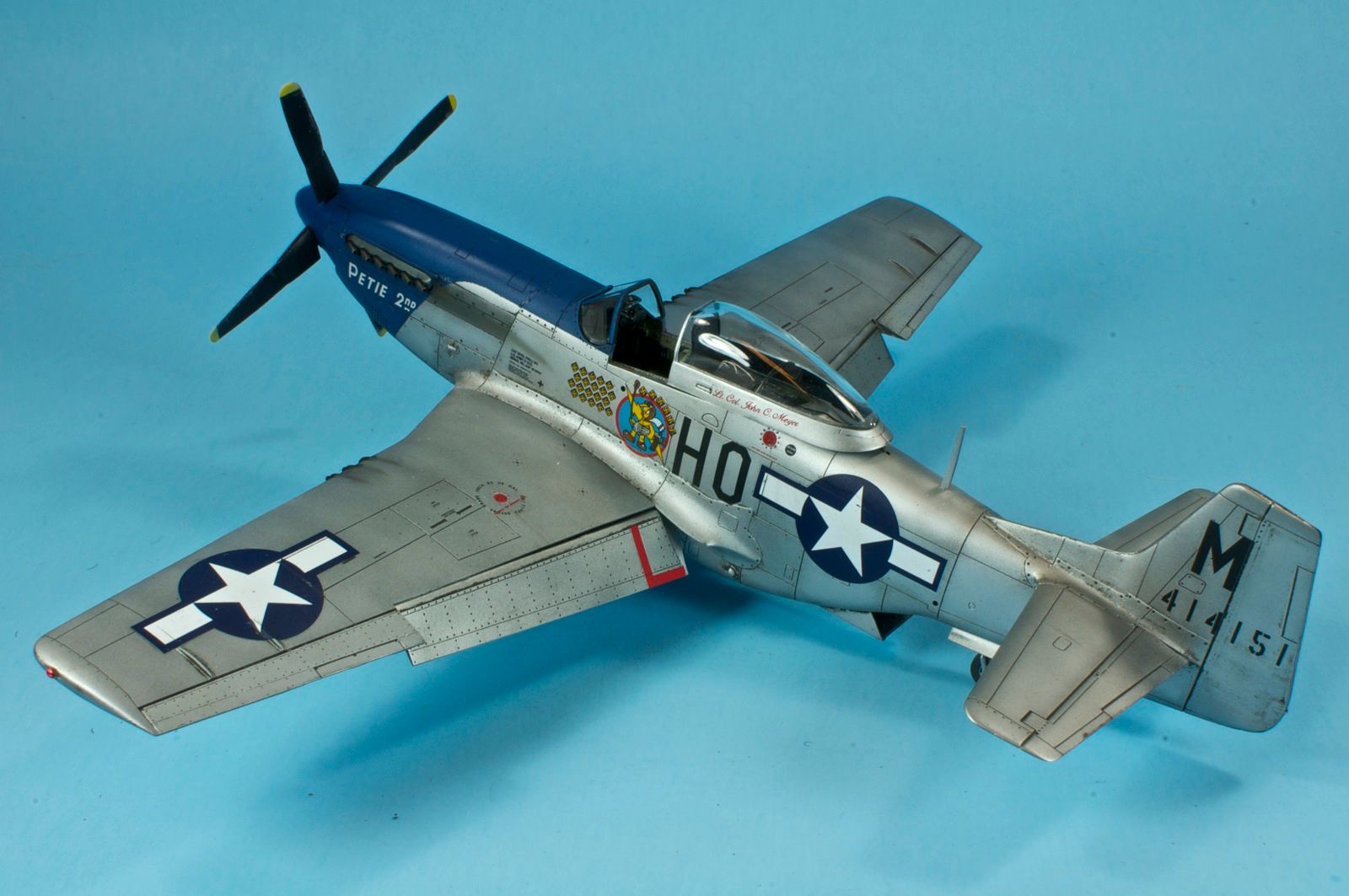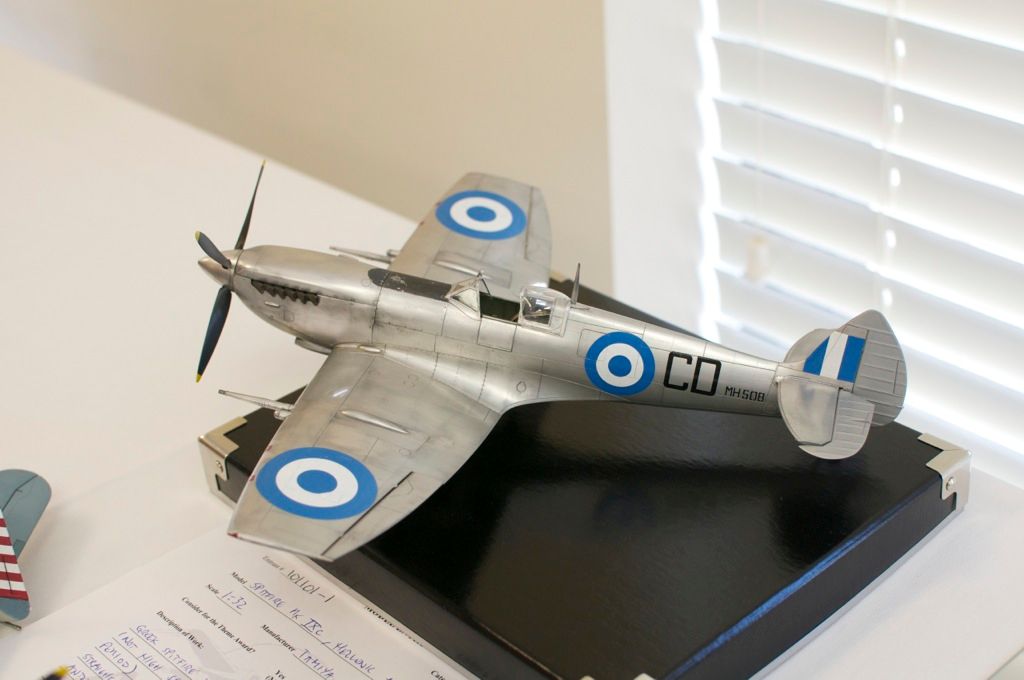Newtothis
Hey all,
I haven't made models since I was a kid but now I'm just getting back into it.
Welcome back! I was in your boat a little over a year ago. It's staggering how much has changed, and how much the internet has added to the knowledge base that's out there.
I'll do my best to give my take on some of your questions...
* What is the best way to get a metalic finish on a largish area - like a P51 (which is what I hope to work on soon)? Steps in the process etc?
There are two basic ways. Paint, or direct application of metal.
Application of metal usually involves adhering foil. I've seen this done very, very well, but it's something I have no interest in trying myself.
For paint, you have a ton of options. My favorite is Alclad II. You have to lay down a smooth primer base first (gloss black with their high-shine finishes), then airbrush in misting coats. Here's a post I wrote on my technique, and the results:

In rattlecan, there are two options I think would be passable (but not ideal) - Tamiya AS-12 Bare Metal Silver (IMO this does a better job of approximating aluminum lacquer paint) or Testors Model Master Metalizer (which comes in rattlecans as well as airbrush-ready bottles). The latter can be buffed to a high shine, but doesn't take masking very well.
Another option for the airbrushless is wax-based metallic paint. You can find this at hobby stores as Rub 'n Buff and similar. You literally just smear it on. The wax makes it very spreadable, then when it dries you can do whatever to it. Here's an example from the recent Austin SMS contest:

* Best methods for decals? I understand you put a coat of something over these, but I'm not sure what it is and would welcome advice!
After you paint, you want to put down a smooth, gloss clear coat. This will help the decals snuggle down onto the surface and prevent bubbles and silvering and all that nastiness. Use a decal setter as you position the decal, and a decal solvent to "melt" the decal and really suck it down to surface details. When the decals are done, seal them with another clear coat.
* On that topic, is there a coat of something you apply to the model overall, once finished? Presumably some of it will have different levels of gloss, so how is that sorted out?
Yes. Usually either airbrushed or rattlecanned. Testors makes "Glosscote" and "Dullcote". Tamiya has clear gloss, clear semi-gloss, clear flat, etc. You want to apply in light, misting coats.
* I don't yet own an airbrush. Can I get away with spray cans, masking and brushes for the time being?
Yes. Though I'd highly advise an airbrush in the near future.
* I have looked at pictures of really well-done models, where some of the lines between panelling seems to be enhanced with fine dark lines... is there a particular technique for this? And while we're at it, any other useful tips for minute details on the larger panels?
Yes, this is a wash. There are two main approaches. The first is a pin wash, where small amounts of highly thinned paint are applied into a panel line. The capillary action pulls the paint along the panels. The other is a sludge wash, that is applied all over the model, then wiped off, leaving only the panel lines. I prefer the latter on aircraft, and use Flory Models clay-based washes since they wipe off very well. Stick with dark browns or greens. Black is too stark, unless you're working over a very dark color (dark blues tend to make dark browns look like, well, just brown).
I've got some other tips I could share, but those are airbrush-based. Though you can certainly use pigments to add fading to panels. You can use small dots of paint and work them in with a thinner-damped brush (this is called dot filtering, and adds subtle tonal variations to the paint). You can get a silver artist pencil (Prismacolor does a great one) and "tap" it along traffic areas and access panel edges to represent chipped paint.
* any other tips or advice for beginners?
1 - Start with kits YOU WANT TO BUILD! There's a lot of advice to pick up a very cheap kit because hey, who cares if you ruin it. I'd focus more on a kit with decent detail and a reputation for really good fit first...there are plenty of them to be found for less than $25. But importantly...have an interest in the subject and the kit you're building, otherwise it can get frustrating, especially for the first couple.
2 - Don't try to do everything at once. When I came back I was all "wow look at all these techniques!". But trying to take on too many at once got me into trouble a few times. I think tackling maybe one or two new techniques per build is a far more balanced way, and lets you really concentrate on those techniques.
3 - Understand than 75% of modeling is subjective, and so is the other half  . What works for one person may not work for another. Everyone has different preferences and ways of doing things, and there's no one right answer. It's important to get a sense of the options, but at the end of the day, you have to figure out what works best for you on your own.
. What works for one person may not work for another. Everyone has different preferences and ways of doing things, and there's no one right answer. It's important to get a sense of the options, but at the end of the day, you have to figure out what works best for you on your own.
[/quote]